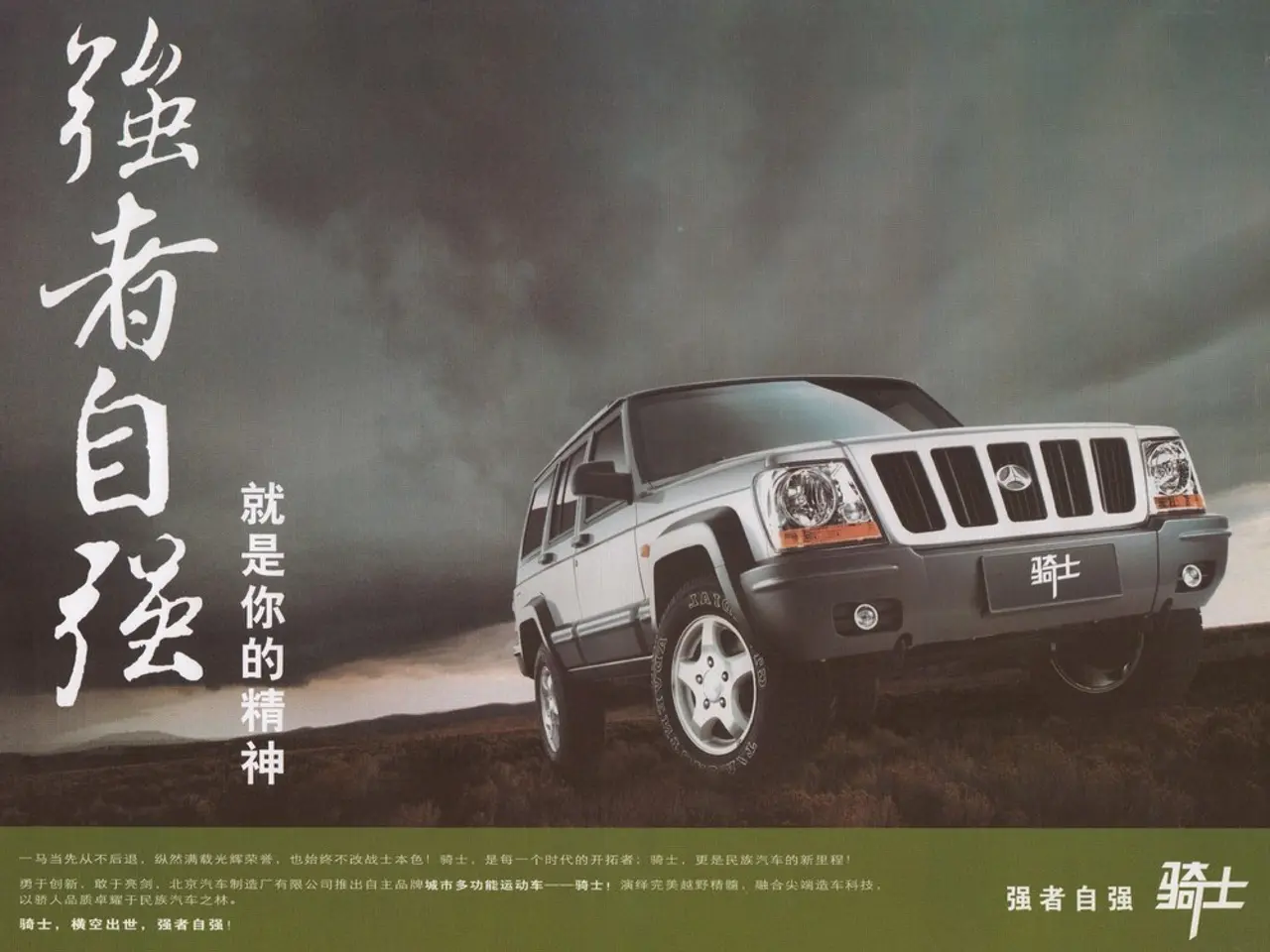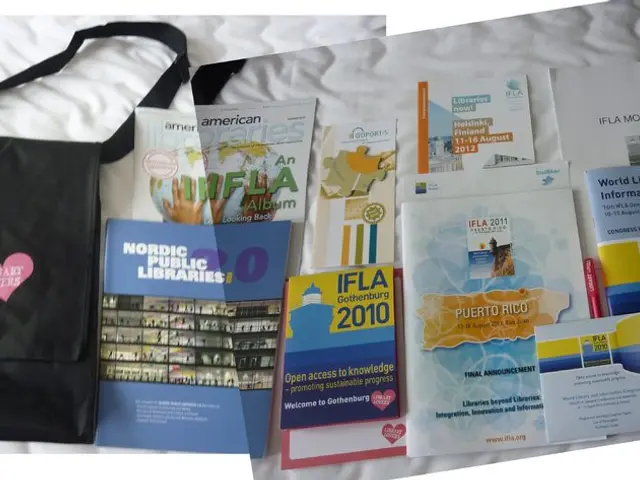Chinese rule advocated through slogans for Tibetans to integrate
In the remote eastern Tibetan Autonomous Region of Nyingchi, China, a blend of cultures is on display, reflecting the government's emphasis on ethnic integration. This unique mix is marked by political slogans, urbanization projects, and relocation policies, all aimed at promoting unity and assimilation [1][2].
The regional ethnic autonomy system ensures Tibetan ethnic minority representation in major leadership roles, fulfilling legal mandates to give ethnic minorities political authority. Over half of township-level party leaders are ethnic minorities, reflecting the official framework for ethnic self-management and inclusion in political leadership [3].
However, reports suggest that Han Chinese increasingly dominate economic activities, particularly in urban commercial areas. Tibetan shopkeepers sometimes report declining patronage, indicating that economic assimilation is uneven and sometimes disadvantageous for local Tibetans [2]. The integration is promoted publicly as mutually beneficial ethnic unity, but conditions on the ground include rapid urban development, demographic change, and a strong government narrative emphasizing loyalty to the central leadership [1][2].
Cultural events such as the Peach Blossom Festival and development projects in villages like Galai emphasize modernization and improved livelihoods, projecting an image of ethnic harmony and progress under Chinese governance, which is also strongly promoted by Chinese leadership including President Xi Jinping [3][4].
One example of this integration can be seen in the home of a Monpa resident, who displayed close affiliation with the Communist Party, as evidenced by commemorative photos with Party officials. The resident purchased the portrait of Chinese President Xi Jinping on their own accord [5]. Slogans promoting ethnic integration are displayed throughout Nyingchi, with the "Long live ethnic unity!" slogan visible on a nearby mountain.
Despite these efforts, the history of Tibet is marked by resistance and opposition to Chinese rule, including riots and protests. The 1959 Tibetan uprising, sparked by fears of the Dalai Lama's arrest, resulted in a severe crackdown and his exile [6]. Critics claim the Chinese government is enforcing ethnic assimilation, while the government maintains that its policies aim to promote unity and progress [7].
Nyingchi is home to 35 ethnic groups, most of which are indigenous to Tibet. Along with the dominant Han Chinese group, there are 55 officially recognized ethnic minorities in China, including the Monpa and Lhoba people in Nyingchi [8]. Construction of high-rise tenements and other buildings is ongoing in Nyingchi, signifying the region's rapid urban development [9].
A woman from Guangdong Province, who moved to Nyingchi eight years ago, runs a souvenir shop and emphasized the friendly relationship between ethnic groups. A Monpa ethnic minority resident expressed gratitude for relocation, stating improved convenience and increased income [10]. Chinese flags are visible on streetlights in Nyingchi, symbolizing the region's integration into China.
In summary, the current situation in Nyingchi is a complex interplay of political representation, assimilation efforts, and cultural preservation. While the government promotes ethnic unity and assimilation, underlying tensions persist, particularly in economic activities where Han Chinese dominance is evident. The future of Nyingchi and its diverse ethnic groups remains a topic of ongoing debate and observation.
References: [1] Xinhua. (2021, February 5). China's Tibet sees rapid development in urbanization. Xinhuanet. https://www.xinhuanet.com/english/2021-02/05/c_139348212.htm [2] South China Morning Post. (2021, March 10). Tibetans in China's Nyingchi region face economic pressures as Han Chinese migrants flood in. South China Morning Post. https://www.scmp.com/news/china/politics/article/3126966/tibetans-chinas-ningchi-region-face-economic-pressures-han [3] Tibet Policy Institute. (n.d.). Ethnic Autonomy in Tibet. Tibet Policy Institute. https://tibetpolicy.org/ethnic-autonomy-in-tibet/ [4] China Daily. (2021, March 26). Nyingchi's Peach Blossom Festival promotes ethnic unity. China Daily. https://www.chinadaily.com.cn/a/202103/26/WS60627576a310fd2b29e59372.html [5] South China Morning Post. (2021, March 10). Tibetans in China's Nyingchi region face economic pressures as Han Chinese migrants flood in. South China Morning Post. https://www.scmp.com/news/china/politics/article/3126966/tibetans-chinas-ningchi-region-face-economic-pressures-han [6] BBC News. (1959, March 17). Tibetan uprising: Dalai Lama flees to India. BBC News. https://www.bbc.co.uk/news/world-asia-china-16569623 [7] Human Rights Watch. (2020, August 13). China: Tibetans Face Harsh Repression. Human Rights Watch. https://www.hrw.org/news/2020/08/13/china-tibetans-face-harsh-repression [8] China.org.cn. (n.d.). Ethnic Groups in China. China.org.cn. https://www.china.org.cn/china/ethnicgroups/2009-08/28/content_18388222.htm [9] Xinhua. (2021, February 5). China's Tibet sees rapid development in urbanization. Xinhuanet. https://www.xinhuanet.com/english/2021-02/05/c_139348212.htm [10] South China Morning Post. (2021, March 10). Tibetans in China's Nyingchi region face economic pressures as Han Chinese migrants flood in. South China Morning Post. https://www.scmp.com/news/china/politics/article/3126966/tibetans-chinas-ningchi-region-face-economic-pressures-han
Read also:
- Tobacco industry's suggested changes on a legislative modification are disregarded by health journalists
- Uncovering Political Ad Transparency: A Guide to Investigating opponent's Political Advertisements in the Digital Realm
- Elon Musk praises JD Vance's debate performance against Tim Walz
- Neglected Home Infections: Authorities Overlook Domestic Spread of Diseases








